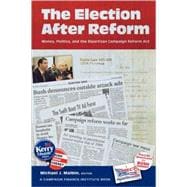
Note: Supplemental materials are not guaranteed with Rental or Used book purchases.
Purchase Benefits
|
ix | ||||
| Acknowledgments | xiii | ||||
|
1 | (18) | |||
|
|||||
|
2 | (2) | |||
|
4 | (4) | |||
|
8 | (1) | |||
|
9 | (6) | |||
|
15 | (4) | |||
|
|||||
|
19 | (19) | |||
|
|||||
|
20 | (2) | |||
|
22 | (2) | |||
|
24 | (5) | |||
|
29 | (6) | |||
|
35 | (1) | |||
|
36 | (2) | |||
|
38 | (19) | |||
|
|||||
|
|||||
|
39 | (8) | |||
|
47 | (9) | |||
|
56 | (1) | |||
|
57 | (22) | |||
|
|||||
|
57 | (2) | |||
|
59 | (1) | |||
|
60 | (7) | |||
|
67 | (2) | |||
|
69 | (2) | |||
|
71 | (3) | |||
|
74 | (5) | |||
|
|||||
|
79 | (33) | |||
|
|||||
|
|||||
|
80 | (2) | |||
|
82 | (2) | |||
|
84 | (6) | |||
|
90 | (1) | |||
|
91 | (2) | |||
|
93 | (4) | |||
|
97 | (2) | |||
|
99 | (2) | |||
|
101 | (11) | |||
|
112 | (29) | |||
|
|||||
|
|||||
|
|||||
|
|||||
|
114 | (7) | |||
|
121 | (16) | |||
|
121 | (5) | |||
|
126 | (11) | |||
|
137 | (1) | |||
|
138 | (3) | |||
|
|||||
|
141 | (20) | |||
|
|||||
|
|||||
|
|||||
|
143 | (3) | |||
|
146 | (1) | |||
|
146 | (1) | |||
|
147 | (1) | |||
|
148 | (3) | |||
|
151 | (5) | |||
|
156 | (3) | |||
|
159 | (1) | |||
|
160 | (1) | |||
|
161 | (24) | |||
|
|||||
|
|||||
|
163 | (2) | |||
|
165 | (1) | |||
|
166 | (4) | |||
|
170 | (1) | |||
|
171 | (6) | |||
|
177 | (3) | |||
|
180 | (1) | |||
|
180 | (1) | |||
|
181 | (4) | |||
|
|||||
|
185 | (19) | |||
|
|||||
|
186 | (2) | |||
|
188 | (4) | |||
|
192 | (1) | |||
|
193 | (4) | |||
|
197 | (4) | |||
|
201 | (1) | |||
|
202 | (2) | |||
|
204 | (15) | |||
|
|||||
|
205 | (2) | |||
|
207 | (8) | |||
|
215 | (1) | |||
|
216 | (1) | |||
|
217 | (2) | |||
|
219 | (28) | |||
|
|||||
|
220 | (3) | |||
|
223 | (6) | |||
|
229 | (1) | |||
|
230 | (2) | |||
|
232 | (4) | |||
|
236 | (1) | |||
|
237 | (3) | |||
|
240 | (2) | |||
|
242 | (3) | |||
|
245 | (2) | |||
| Appendix 1: The Bipartisan Campaign Reform Act A Summary | 247 | (4) | |||
| Appendix 2: McConnell v. FEC 540 U.S. 93 [2003]: A Summary | 251 | (2) | |||
| Introduction to Appendices 3 through 5 | 253 | (1) | |||
| Appendix 3: FEC Regulations: Soft Money | 254 | (5) | |||
| Appendix 4: FEC Regulations: Coordinated and Independent Expenditures | 259 | (7) | |||
| Appendix 5: FEC Regulations: Electioneering Communications | 266 | (5) | |||
| Works Cited | 271 | (12) | |||
| Index | 283 | (8) | |||
| About the Authors | |||||
| The Editor | 291 | (1) | |||
| The Contributors | 291 |
The New copy of this book will include any supplemental materials advertised. Please check the title of the book to determine if it should include any access cards, study guides, lab manuals, CDs, etc.
The Used, Rental and eBook copies of this book are not guaranteed to include any supplemental materials. Typically, only the book itself is included. This is true even if the title states it includes any access cards, study guides, lab manuals, CDs, etc.